Peru is one of those countries that I keep coming back to again and again. Part of the reason is that I have family there, but the other reason is that there is so much too see and experience. No matter how much time I spend in Peru – I’ve been there 3 times in the last 2 years alone! – I still keep finding new places to add to my bucket list.
Some travellers quickly skip through Peru only making time to visit Cuzco and Machu Picchu, but there is so much more to this country than Inca ruins. Today I’m going to share my 1-month Peru travel itinerary, which to be honest, I feel barely skims the surface and only touches on some of the country’s main highlights, but you have to start somewhere! Consider this travel itinerary an introduction to Peru and if you enjoy the country as much I do, then you can always plan a return and head into the more remote and harder to access regions. Now here’s a look at how to spend 1 month in Peru.
Peru Travel Guide: Things to Do, See, Eat, Drink & Experience in Peru!
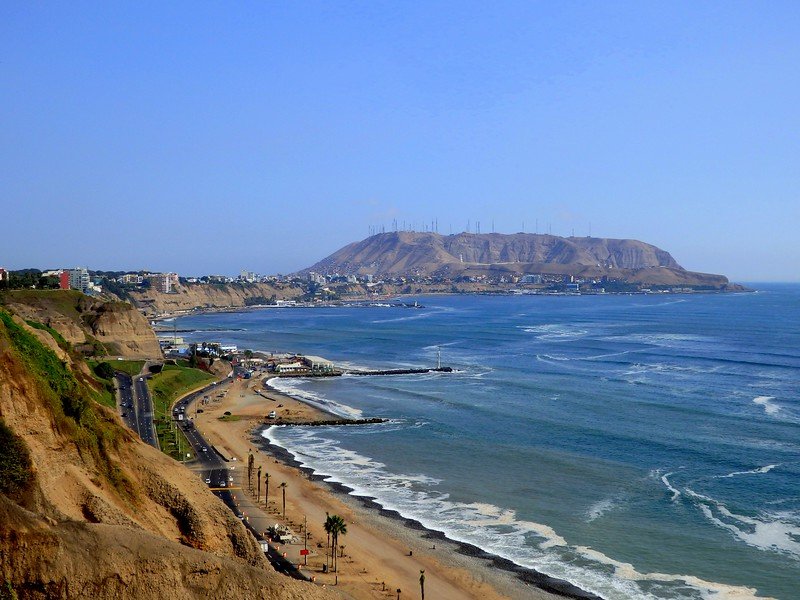
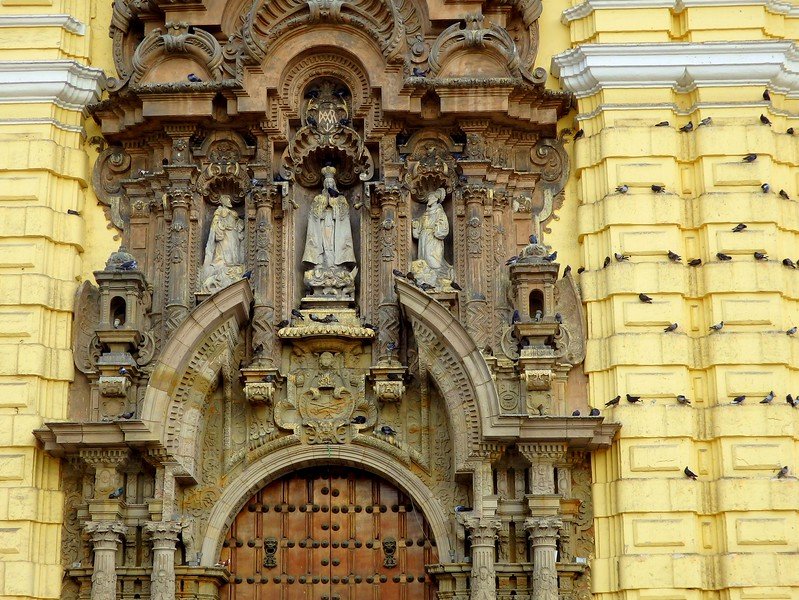
Lima (3 Days)
Let’s start in the capital, Lima, since that is where you’ll likely be flying into. Lima is the second most populous city in all of South America and it can be a bit overwhelming if you don’t know where to go. People will often tell you to skip it entirely and just continue on to Cuzco, but I like Lima and I think it has quite a bit to offer, so I’m going to try to convince you otherwise.
There are 3 neighbourhoods, which I think are great for first-time visitors: Miraflores, Barranco and Centro. Miraflores is located along the water and it is an affluent neighbourhood with seafront properties, beautiful parks and lots of great restaurants. Here you’ll want to visit El Parque del Amor, shop at the Hippie Fair in Parque Kennedy, and if you’re feeling brave you can even try paragliding.
Barranco has more of an artsy bohemian flair and it’s also known for its nightlife. In Barran, o you’ll want to enjoy all the street art, walk across the Bridge of Sighs, and pop into the various museums and art galleries.
Lastly, in Centro you can visit Plaza de Armas, tour the catacombs inside the San Fracisco Monastery, and watch the changing of the guard at the Presidential Palace. And that is just a quick introduction; you can read this other article for more ideas of things to do in Lima and this other one will give you ideas of easy weekend trips.
Now let’s move on to the food. Since Lima is on the coast, you’ll have to sample ceviche, a raw fish dish that has been cured in lime, and is served with corn, sweet potato, and red onions. It is delicious and a must try! If you’re more adventurous, then go for anticuchos, which are grilled meat skewers (typically cow heart!) served with a side of corn. I know it sounds a bit strange, but it tastes just like steak.
Where I stayed in Lima:
I usually stay with family when I visit Lima, but regardless, I would recommend staying in the neighbourhood of Miraflores. Located right by the seaside, this is one of the nicest areas in the city, plus you also have easy access to Barranco and plenty of tours into the historic centre. There are plenty of hotels, hostels and guesthouses in this neighbourhood, plus AirBnB has a great range of properties, and if it’s your first time using it, you can get a $40 discount code here.
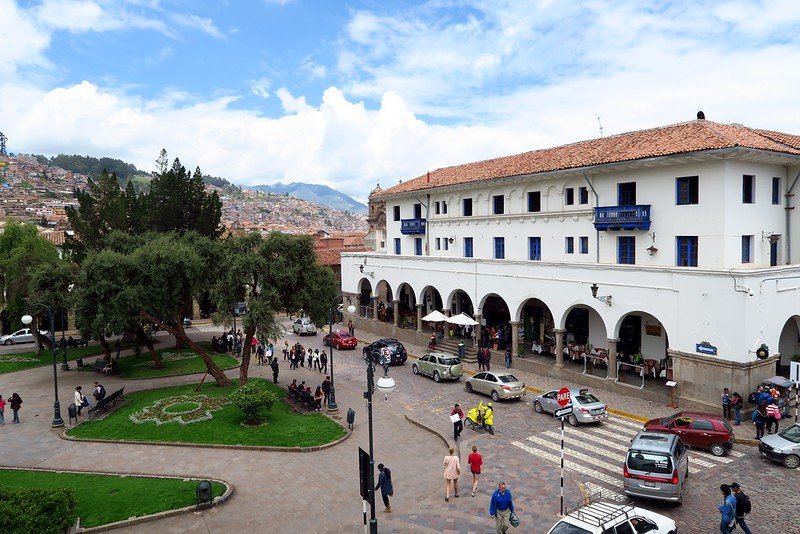
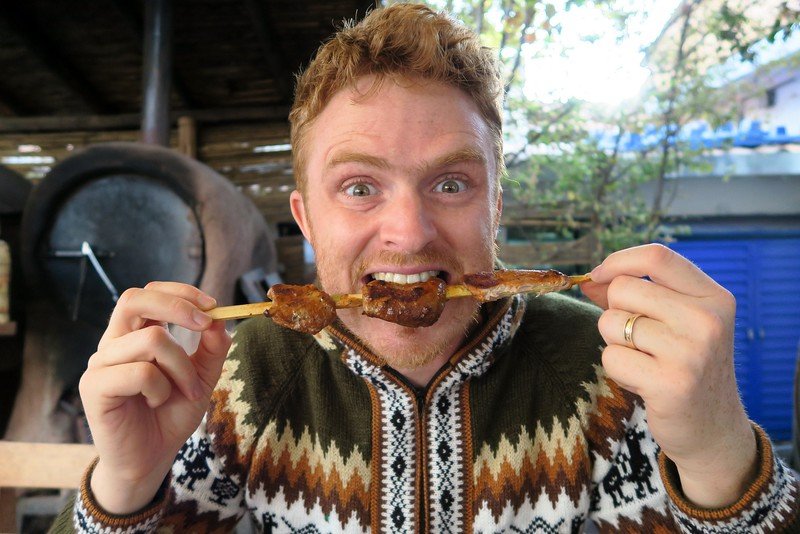
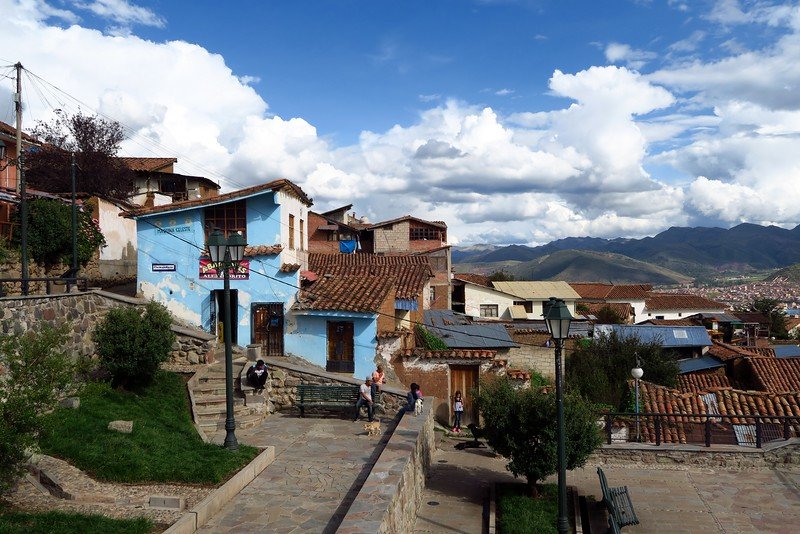
Cuzco (3 Days)
I would suggest spending at least 3-4 days in Cuzco since the first two days will likely be a write off depending on how well you handle altitude sickness. When you fly into Cuzco, it’s recommended that you spend your first day resting and that you follow that up with some light sightseeing on the second day. Some people aren’t affected by the altitude and can hit the ground running, but I’ve seen other people be standing one minute and then hit the ground like a sack of potatoes the next, so it’s better to take precautions.
Once you’ve been able to acclimate, it’s time to start exploring and luckily there’s plenty to see and do in Cuzco. Some of the main sights in Cuzco include: Qorikancha, the most important temple in the Inca Empire which was dedicated to the Sun God; Plaza de Armas, the main square where you’ll find Cuzco Cathedral; the Pre-Columbian Art Museum, which houses an art collection in a mansion-turned-convent; and the Inka Museum, which showcases gold-work, pottery, textiles, and even mummies.
For those with a bit of a sweet tooth, you may be interested in the ChocoMuseo, which covers the history of chocolate, and the Pisco Museum, which is a bar that offers pisco tastings.
Foodwise, the cuisine in Cuzco is quite different from what you’ll have experienced in Lima. We found the meals to be a lot heartier. Some traditional dishes you may want to sample include: chairo, a thick soup made with lamb and vegetables; alpaca skewers, very tender cuts of alpaca meat cooked over the grill; and guinea pig, which is usually served roasted (be prepared to get the whole animal on your plate!) Dishes feature a lot of potatoes, corn, and various root vegetables, and coca tea is a staple at every meal.
Where I stayed in Cusco:
While in Cuzco I stayed at Tika Wasi, which is a boutique hotel that sits on the neighbourhood of San Blas overlooking the city. It was a peaceful setting with a cool courtyard and plenty of lounging space, and I also liked that each of the rooms had its own unique design. It was a 7-minute downhill walk into the town, and I feel like this helped us train for the Inca Trail!
Sacred Valley (2 Days)
Keep in mind that you can also take various day trips from Cuzco. Some of your options include: Maras Salinas, the famed terraced salt flats; Pisac, a small town known for its huge Sunday market; Ollantaytambo, the place where the Incas retreated after the Spanish seized Cuzco; and Moray, an agricultural laboratory known for its round terraces where the Incas were able to cultivate resistant varieties of plants high in the Andes. Alternatively, you could book yourself on a full-day tour of the Sacred Valley which hits some of these as well as other sites along the way. Whichever way you do it, the Sacred Valley is a place that you should definitely tack on to your Peru travel itinerary.
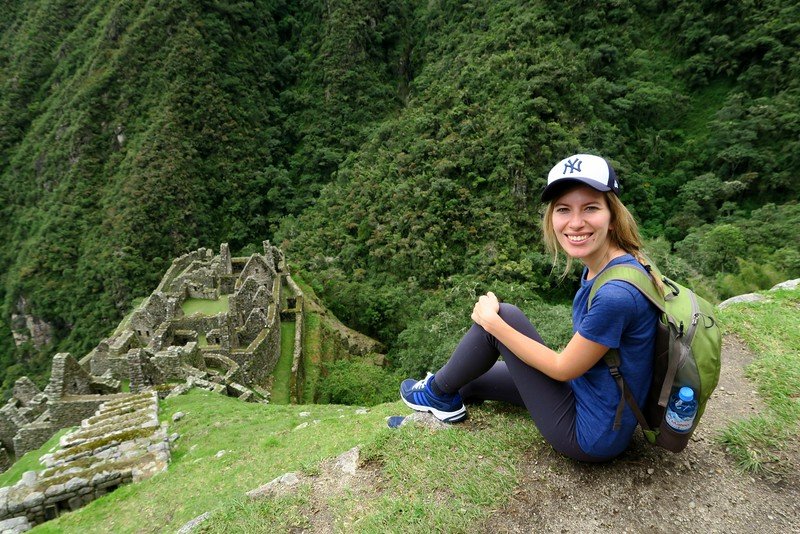
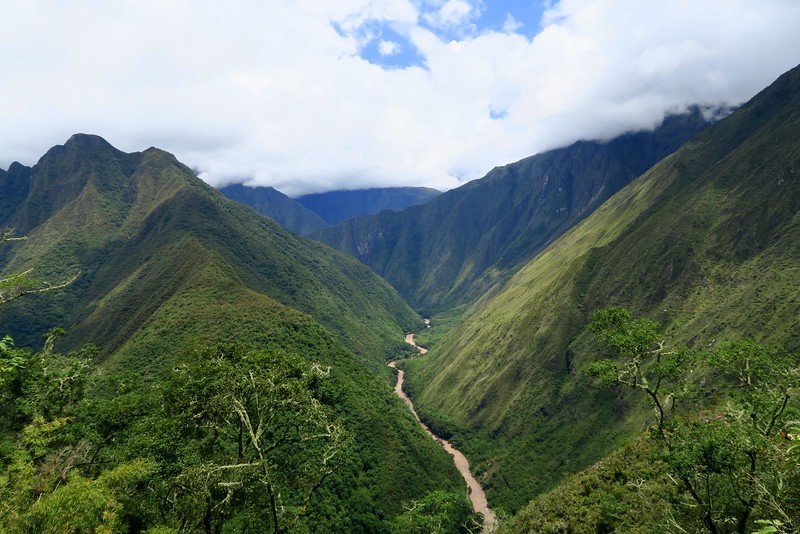
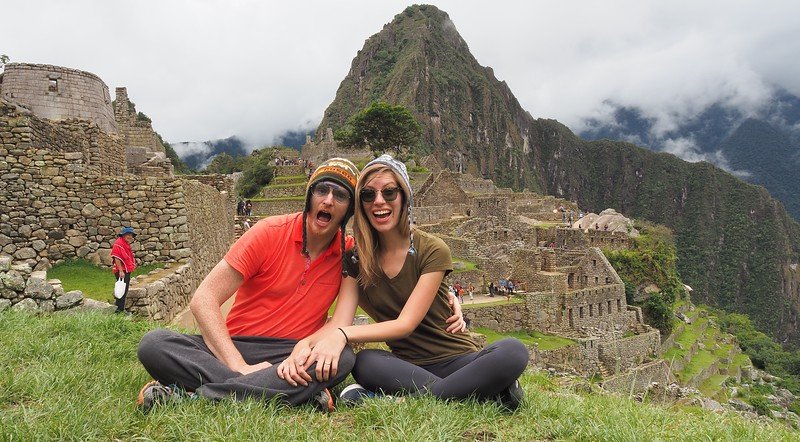
Inca Trail + Machu Picchu + Aguas Calientes (3 Days)
We did the 2-day Inca Trail to Machu Picchu and it was hands down one of the coolest adventures of our visit to Peru. Our first day involved a full day of hiking, and then the second day we had a guided half-day tour of Machu Picchu where our guide brought the city to life with his storytelling. We then had free time that afternoon, so Sam and I spent that time filming and taking pictures.
If you’re walking the Inca Trail or spending more than one day visiting Machu Picchu, then you’ll end up spending at least one night in the town of Aguas Calientes. If you’re feeling sore from all the hiking, you can enjoy a soak in the hot springs that give the town its name, or you could treat yourself to a massage. Alternatively, there are a few easy hikes from Aguas Calients, or you can shop for crafts and souvenir at Mercado Artesanal. Lastly, if you really want to treat yourself to a good meal, head straight to El Indio Feliz, which is run by a French cook who knows how to combine French and Peruvian cuisine to create a culinary masterpiece.
Where I stayed in Aguas Calientes:
In Aguas Calientes, we stayed at Terrazas del Inca which sits right by the river. All I remember is that the hotel had really hot showers and a super comfortable mattress, which was greatly appreciated after all that hiking. They also had a really hearty breakfast, which we gladly gobbled at 4:30 in the morning before heading over to Machu Picchu.
Puno (2 Days)
I have to admit, Puno was not one of my favourite stops in Peru, however, if you want to do one of the overnight Lake Titicaca tours there’s really no other way around it. We ended up spending one night in the town before our tour and another night after. During that time we managed to visit the main square, shop along the pedestrian street, and eat at a few different restaurants. Here’s a look at what to pack for Lake Titicaca if you’re doing an overnight stay.
Where I stayed in Puno:
After one awful night at Duque Inn, we checked ourselves into Hotel Hacienda Plaza de Armas which is located right on the main square and it was worth the small splurge. The rooms were very comfortable, the staff was incredibly helpful, and the location was much more central as opposed to the former property which was located up a very steep hill.
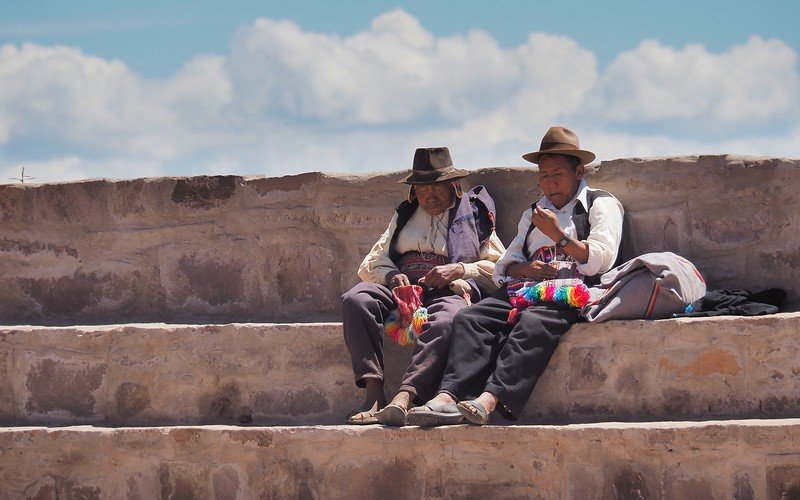
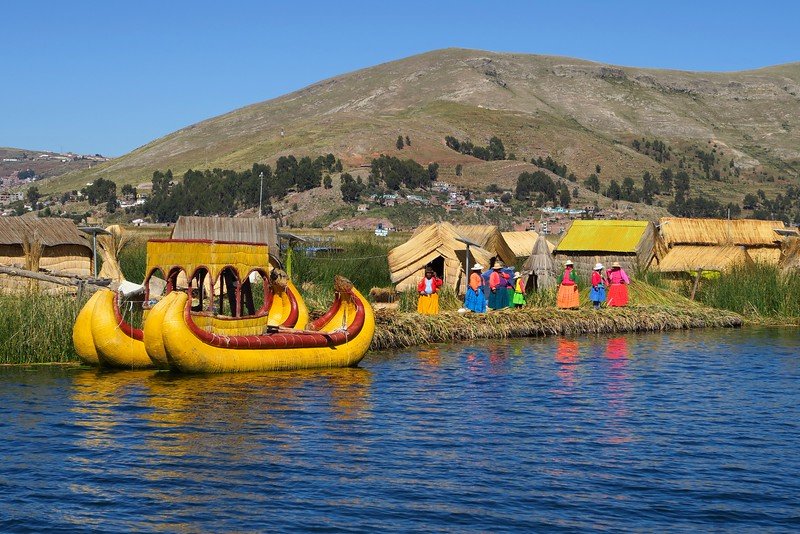
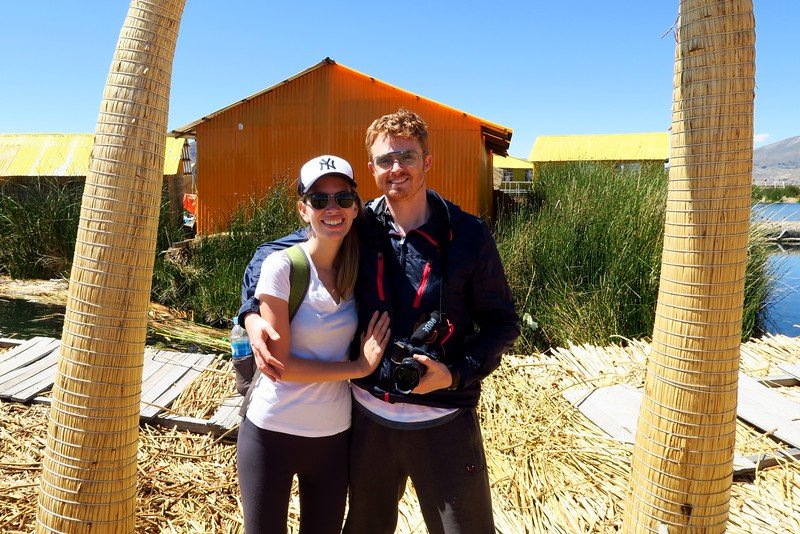
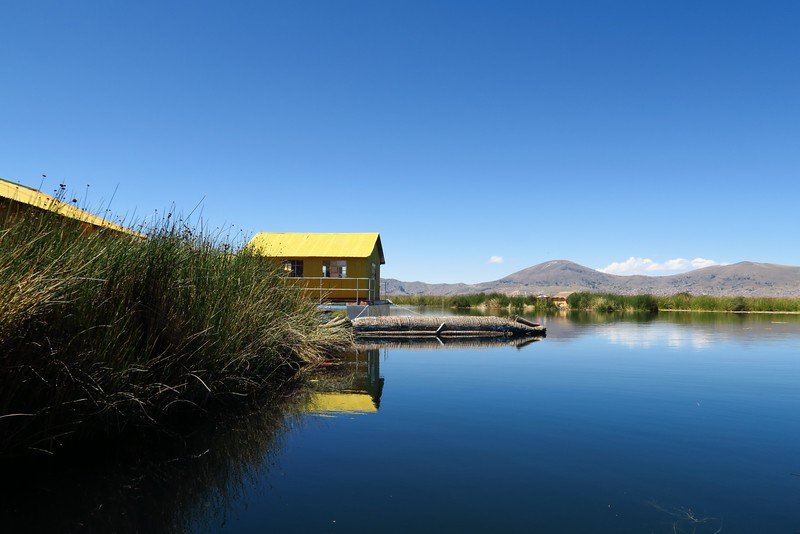
Lake Titicaca (2 Days)
When it comes to visiting Lake Titicaca, you can choose between a day tour or an overnight tour that includes a local homestay. The day tour only takes you as far as the reed islands which are settled by the Aymara, whereas the overnight tour takes you a bit further to some of the island communities settled by the Quechua.
We opted for the 2-day overnight tour (you can do longer ones) which took us to a total of 3 islands: Uros, Amantaní, and Taquile.
In Uros, we visited a reed island called Corazon del Lago, where we met the families who live there and learned about their daily life on a floating island. We had an interpreter with us the whole time, which allowed us to ask the types of questions that cross every visitor’s mind: Where are the bathrooms? How do you have electricity? Isn’t it dangerous for young children to live so close to the water? The answers: They now have outhouses. Solar panels have been installed. And children learn to swim at a very young age.
The second island we visited, Amantaní, was my favourite since we got to stay with a host family and this gave us a unique glimpse at their culture and way of life. Our host mom cooked us a delicious lunch, then we did some hiking in the afternoon, we later had a delicious dinner which was also prepared by our host mom, and after that, we were taken to the local community hall for some music and dancing.
On our final day, we hiked around Taquile, which is an island with UNESCO status for its “Masterpieces of the Oral and Intangible Heritage of Humanity”, namely handwoven textiles and knitting. It was also fascinating to watch our guide interpret the local dress for us; the way men wear their hats can indicate whether they are happy, sad, having an average day, single, married, or an authority figure in the community. That’s a lot of meaning based on the way you wear a hat!
Where I stayed on Lake Titicaca in Peru:
During our tour, we stayed with a local family on the island of Amantaní. We booked our tour through All Ways Travel and once we met our guide, she gave us the option of doing a rustic homestay (no electricity and outhouses) or a more modern homestay (electricity and toilets with running water).
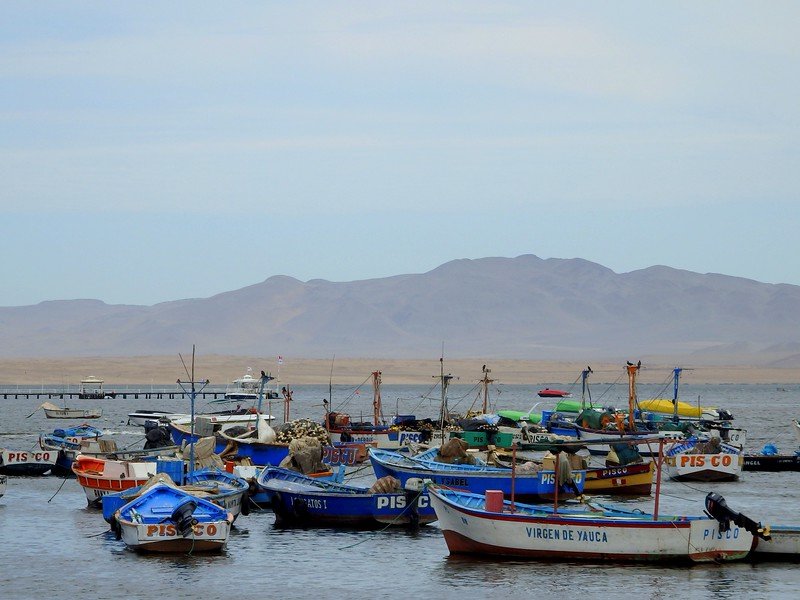
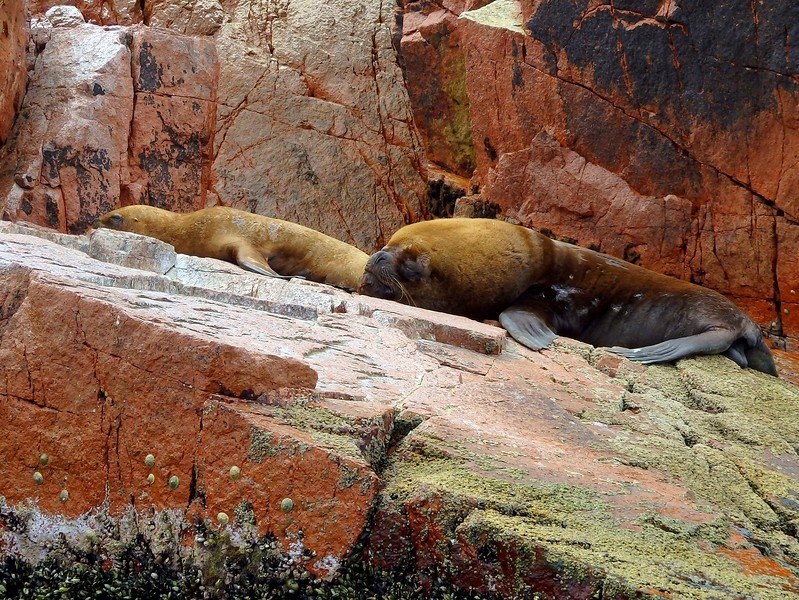
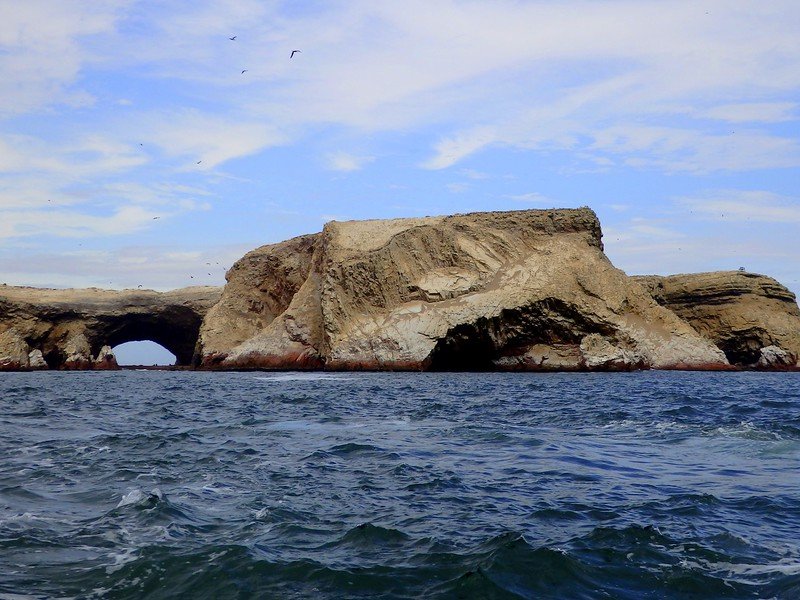
Paracas + Islas Ballestas (1 Day)
If you’re doing a big trip around South America but you don’t have time for the Galapagos Islands, Peru’s Islas Ballestas are often said to be the next best thing; and while they may lack the size and diversity of the Galapagos, the Peruvian islands are an important sanctuary for wildlife plus they do give you a chance to see animals in their natural habitat.
The boat trip from Paracas to Islas Ballestas is just 24 kilometres and it is 30 minutes each way with one hour of sightseeing in between. We got to see a lot of really cool animals including Humboldt penguins, sea lions, sunfish, pelicans, cormorants, terns and more.
If you suffer from motion sickness this may not be the best excursion for you since the waters can be a bit choppy, but otherwise, it’s a nice way to break up the journey down to Huacachina.
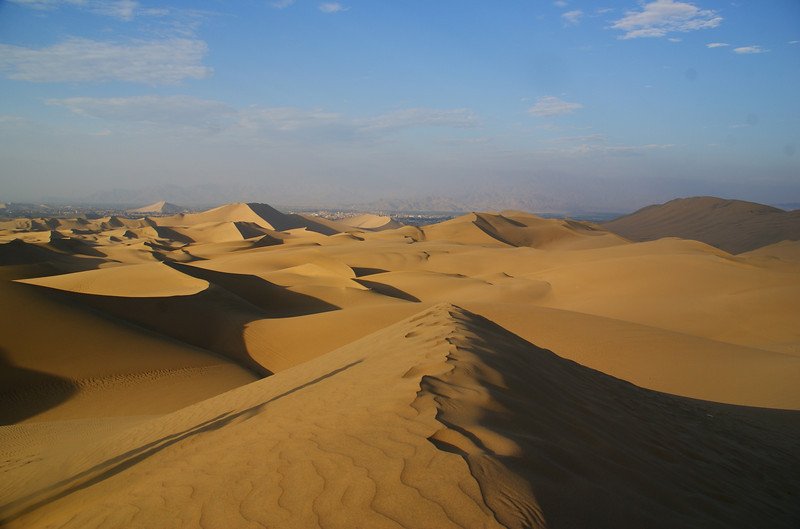
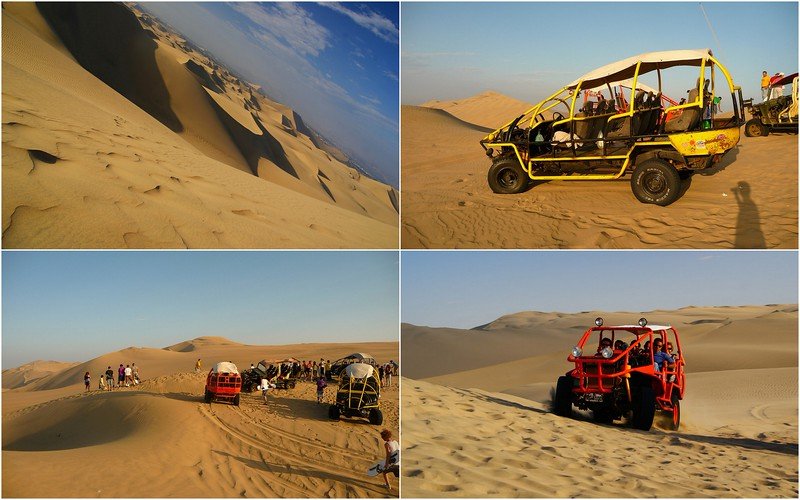
Huacachina (2 Days)
So I only visited Huacachina as a day trip, but once I got there I was wishing I had booked something longer since it’s such a cool destination. Huacachina is a tiny oasis in the middle of the desert; you have a green lagoon surrounded by palm trees, and around that you have a small village that only stretches a few streets back. The place has a very laid-back hippie vibe, and if you’re tired from your travels, this is a great place to just relax.
There are two main activities in Huacachina: sandboarding and dune buggy riding. We tried both. The steep dunes make this the perfect playground and it really felt like we were on a rollercoaster. We booked our tour through a hostel once we arrived in town, and we were out on the dunes within 10 minutes. Our driver also had boards in the buggy, so after tossing us up, down and around, he finally parked atop one of the steepest hills and let us try our hand at sand boarding. Apparently, sandboarding can be a little tricky if you don’t have any previous snowboarding experience, so I ended up sliding down headfirst on the board. Yes, it was terrifying, but it was also a blast!
If you’re looking for something a bit tamer, you can rent paddle boats to take out on the small lagoon, or you can hike up the dunes to watch a killer sunset.
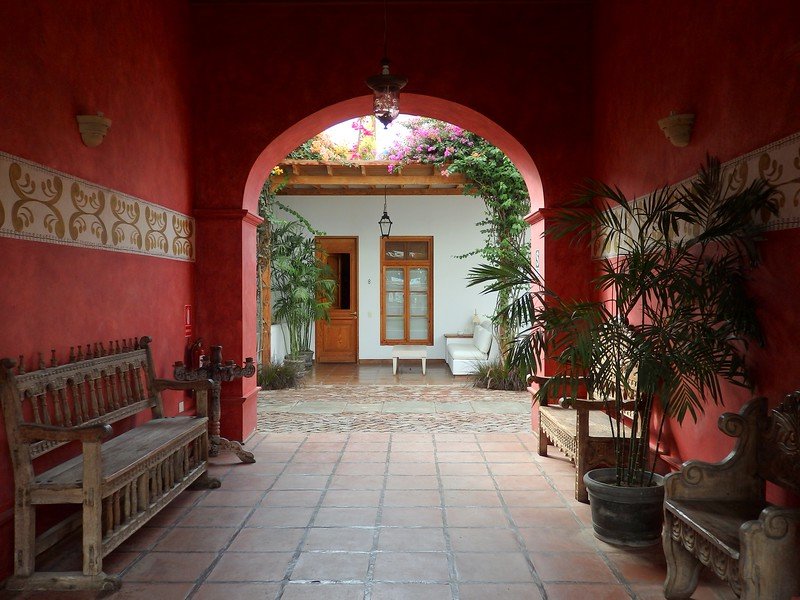
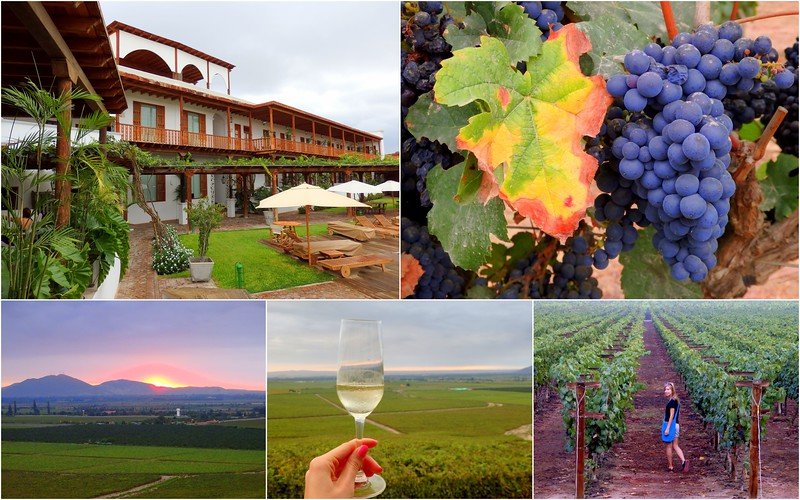
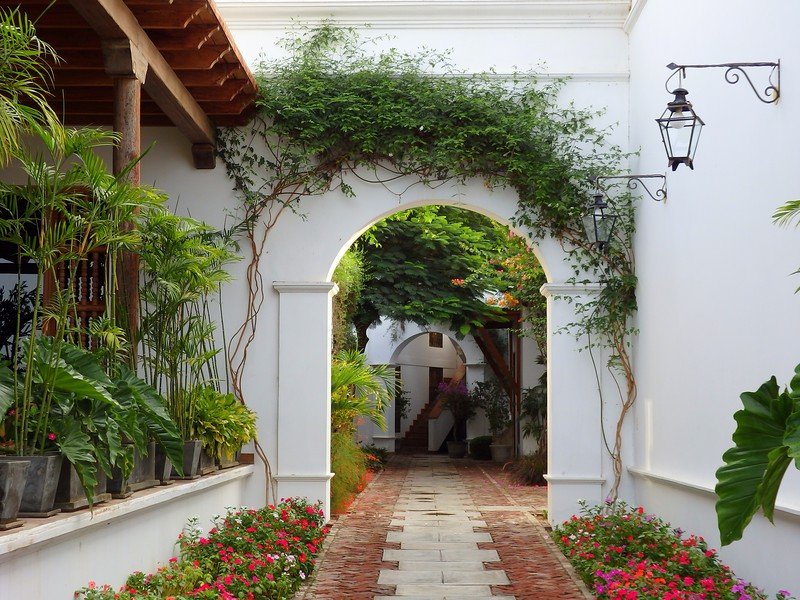
Ica (2 Days)
If you’re already going to Huacachina, you may also want to consider adding a couple of days in Ica to your Peru travel itinerary. While Ica itself is far from being a beautiful city, the area is home to many vineyards and wineries, and once you’re in the outskirts of Ica it’s a whole different world. If you’re looking for a bit of a luxury weekend where you can unwind and relax, this may well be the place for you.
Sam and I booked ourselves in at Viñas Queirolo and we basically stayed on the premises all weekend. We went on a vineyard tour, attended wine tastings, and ate at the in-house restaurant which had some of the most beautiful plates of ceviche I have ever seen in my life.
Where I stayed in Ica:
We stayed at Viñas Queirolo, which is in the outskirts of Ica. It’s a beautiful property and well worth the splurge for a night or two.
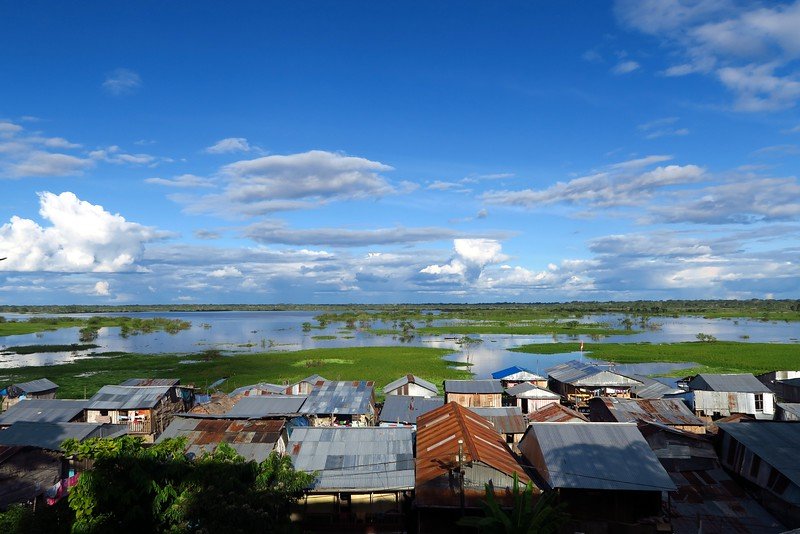
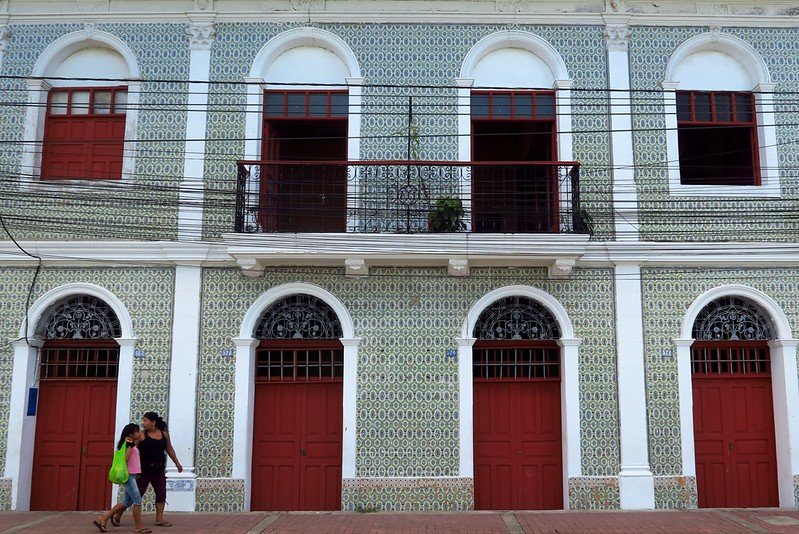
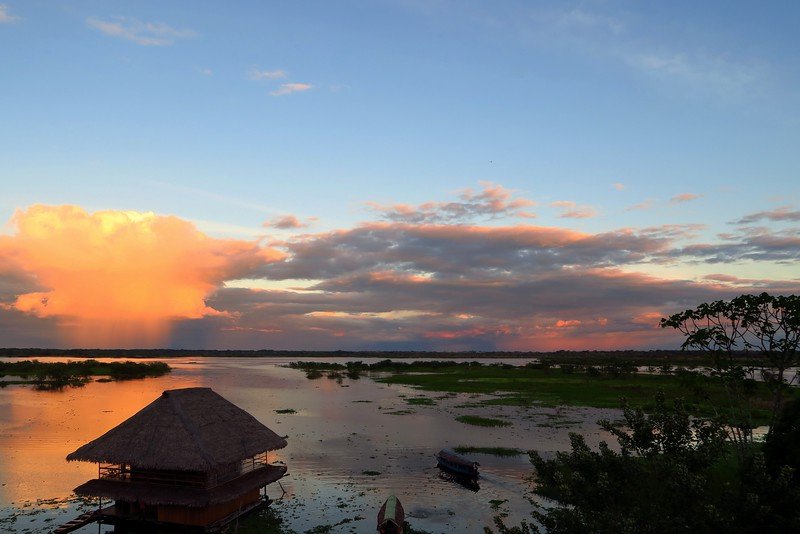
Iquitos (2 Days)
Iquitos marked the start of our trip into the Peruvian Amazon, and again, while many people tend to skip over this city, I enjoyed having a few days to experience it. Here you can visit the stilt village of Belen, stroll along the promenade at sunset, enjoy the colonial architecture, or cool down with a drink at one of the many riverfront cafes on Malecon Maldonado. You can read the following article for some ideas of things to do in Iquitos.
Since Iquitos is in the heart of the jungle, the food is quite different from what you’ll have experienced along the coast or in the sierras. The majority of the dishes here feature fish, rice and tropical fruits. If you’re a foodie, you may want to sample: tacacho y cecina, roasted plantain balls served with a side of dry pork meat ; juane, a steamed dish made of rice and chicken cooked inside a giant leaf; and patarashca de paiche, a large freshwater fish which is steamed in a leaf.
Where I stayed in Iquitos:
While in Iquitos I stayed at the Epoca Hotel, which is a beautiful heritage property right on the shores of the Amazon. The hotel has a colonial hacienda feel with tall ceilings, iron balconies, and a beautiful tiled exterior. Also, the staff was incredibly friendly and helpful, so I can happily recommend them.
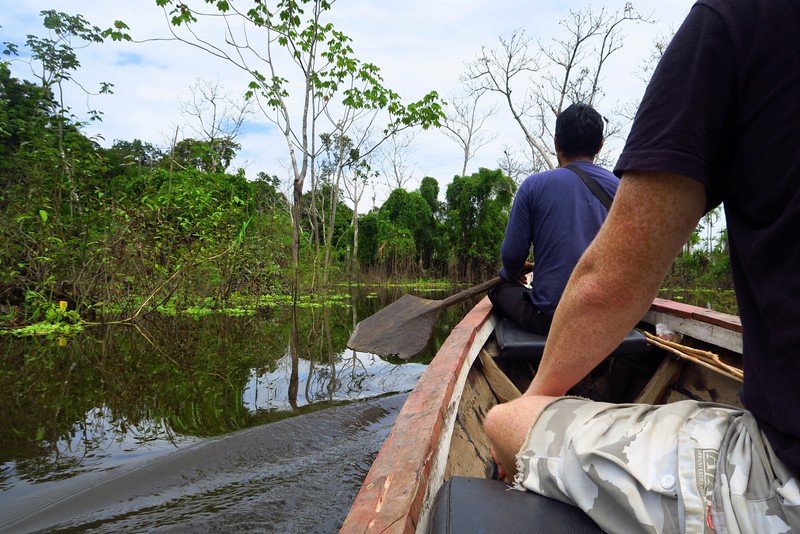
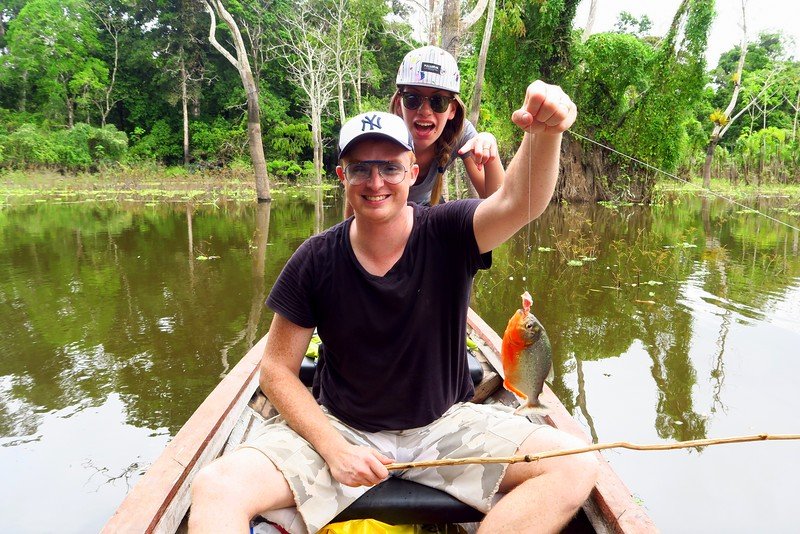
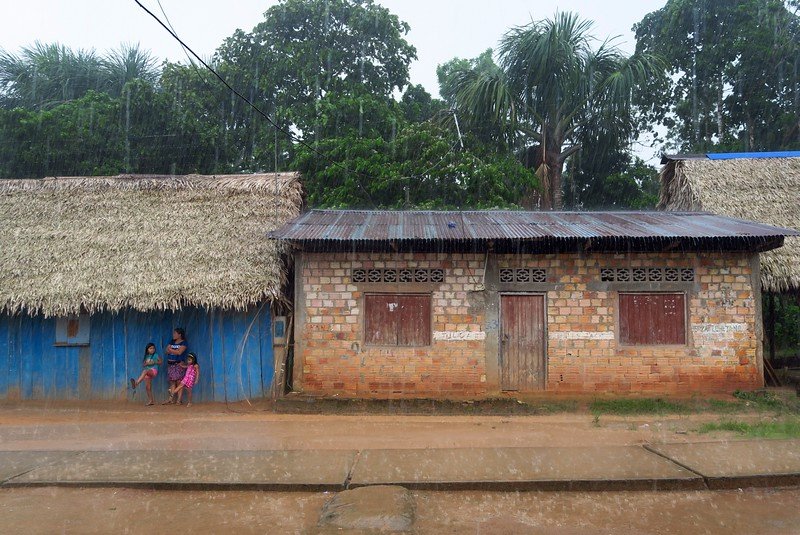
Amazon (6 Days)
Our visit to the Amazon started out with a treehouse stay in the middle of the jungle. We booked 2 nights at the Treehouse Lodge, and it was one of the coolest experiences ever. When we weren’t hanging out in our cool treehouse, we were going on wildlife excursions, fishing for piranhas, or visiting local villages. If you’re adventurous and want to live up in the trees a la Jane and Tarzan, this is a cool experience to consider.
After our treehouse stay, we did a 4-day cruise on the Amazon River which saw us travelling up and down the mighty river. Once again, there were plenty of excursions to keep us busy. We went kayaking along the tributaries, did a canopy walk across a series of hanging bridges, and saw all sorts of wildlife. This was one of those lifelong bucket list experiences and a must add to your Peru travel itinerary!
Where I stayed Treehouse Lodge / Boat:
I spent the first two nights at the Treehouse Lodge and from there I spent the next 3 nights aboard the Delfin I. If you’re thinking of doing both, I would suggest doing the treehouse stay first since it’s a more rustic experience, and then finishing things off with a the cruise since that offered a bit more pampering. Also, here’s a look at what to pack for your trip to the Amazon.
One month in Peru
So that brings us to a grand total of 28 days of travel around Peru. Tack on a few transportation days, including flying and out of the country, and you’ve got yourself a whole month dedicated to exploring some of the gems Peru has to offer. Like I mentioned earlier, I feel this itinerary barely scratches the surface and it only focuses on some of the better known destinations in the country, however, it does cover a mix of cities and rural areas, as well as destinations along the coast, sierras, and jungle. I hope this one month Peru travel itinerary will help whet your appetite and hopefully you’ll be back for more!
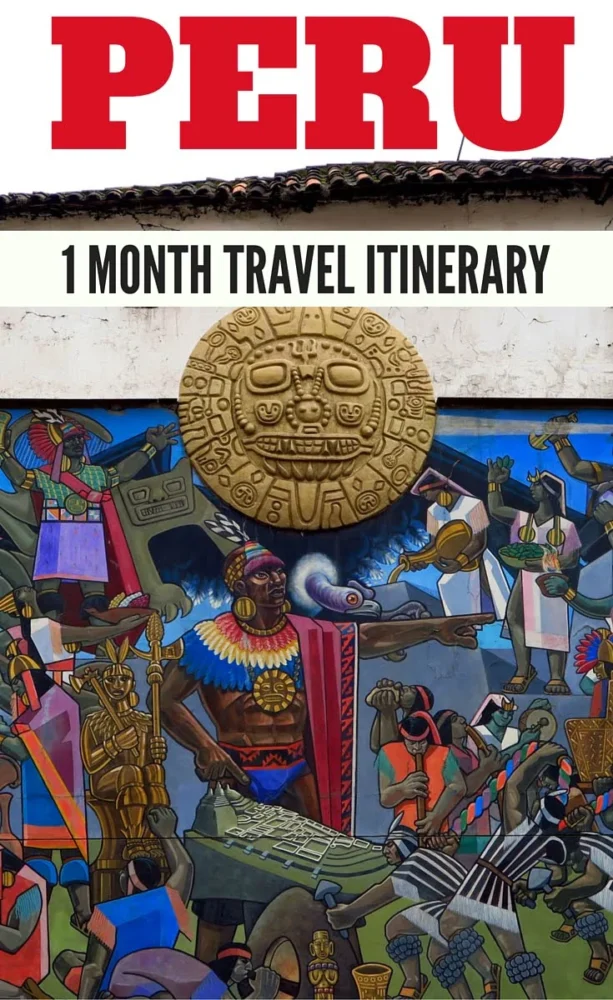
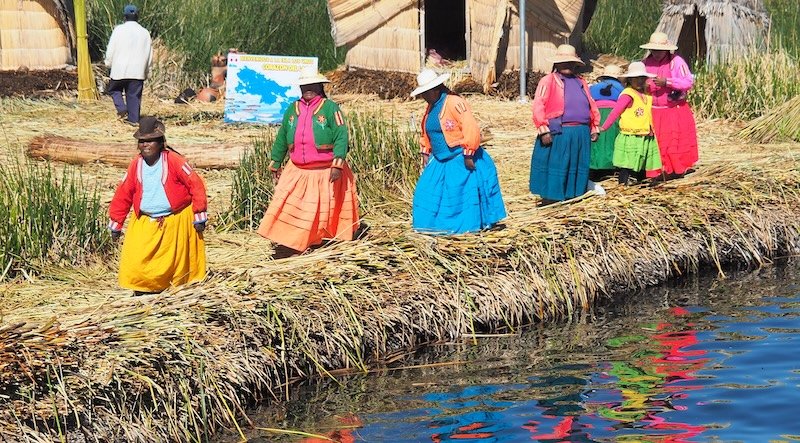
1-Month Peru Travel Itinerary Tips (routes, budgets, packing, safety, and FAQ)
When to Go (by region)
Peru is three countries in one: coast, Andes, and Amazon—each with its own weather mood.
- Coast (Lima, Paracas, Ica, Huacachina):
Best: Dec–Apr (warm, sunny). Cool/damp garúa fog: Jun–Oct—still perfectly visitable, just sweater weather and low clouds. - Andes (Cusco, Sacred Valley, Lake Titicaca):
Best overall: Apr–May and Sep–Oct (dry-ish, green, fewer crowds). Peak dry season: Jun–Aug (blue skies + crowds). Rains: Nov–Mar (lush, but trails can be muddy; some high routes close temporarily). - Amazon (Iquitos + jungle):
High-water season: Dec–May (more canoeable creeks, more bugs). Low-water: Jun–Nov (more beaches, some creeks less accessible). Wildlife good year-round—guides simply change where they take you.
If you’re mixing all three: April/May and September are the sweet spots.
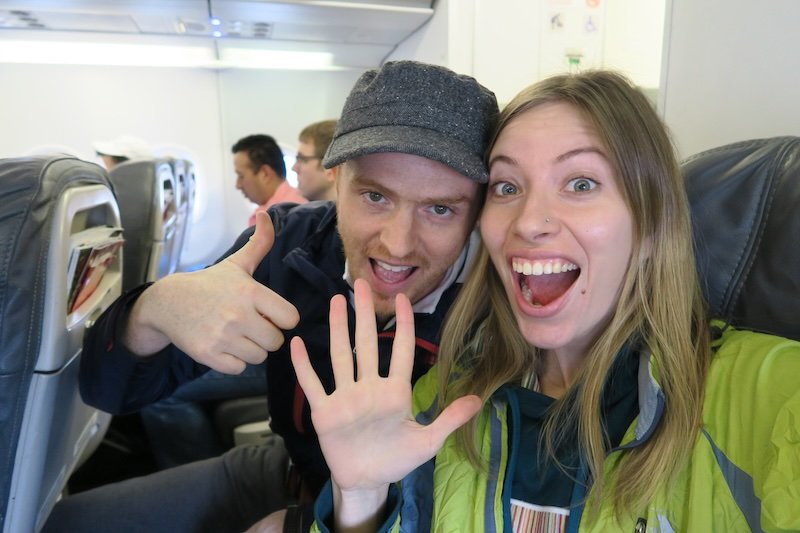
Smart Route Order for Altitude
Give your body a gentle on-ramp:
- Lima (sea level) → 2) Paracas/ Huacachina/ Ica (still low) → 3) Cusco (3,399 m) with rest/light sightseeing day → 4) Sacred Valley (lower than Cusco for gentle acclimatization) → 5) Inca Trail/ Machu Picchu → 6) Lake Titicaca (3,800+ m) → 7) Amazon (back to low altitude).
Altitude comfort checklist
- Hydrate, go slow day one, skip heavy alcohol.
- Coca tea helps some; consult your doctor about acetazolamide if you’re prone to AMS.
- If you feel headache/nausea, rest and descend if symptoms progress.
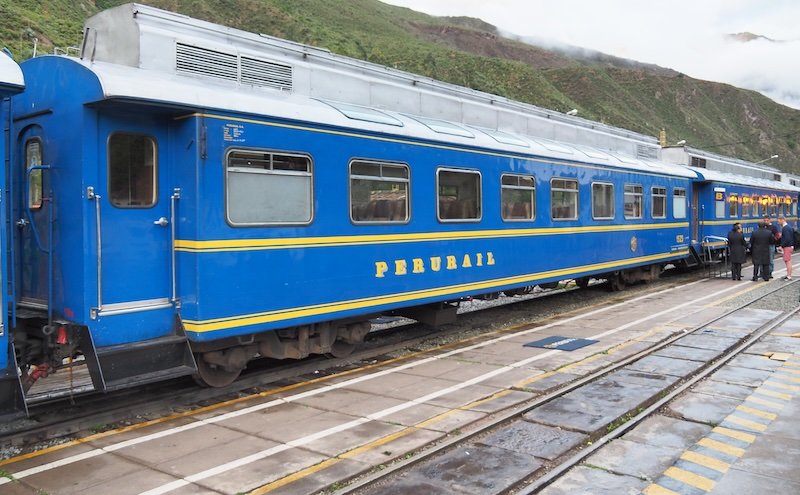
Getting Around (buses, trains, flights, and when to splurge)
- Long-distance buses: Comfortable, budget-friendly, widely used. Opt for semi-cama/cama (reclining seats), choose reputable companies, and book daytime on winding Andean routes if you get motion sick.
- Peru Hop-style passes: Handy for coast segments (Lima ↔ Paracas ↔ Huacachina ↔ Nazca/Arequipa) with hotel pickups and route flexibility.
- Domestic flights: Time savers for Lima–Cusco and Iquitos legs. Book early; luggage allowances vary by airline.
- Trains: Cusco/ Sacred Valley ↔ Aguas Calientes for Machu Picchu (if not trekking). Vistadome gives bigger windows; Expedition is the value pick.
- Taxis/ride apps: In cities, use hotel-called taxis or ride apps where available. In small towns, negotiate fares before hopping in.
- Collectivos (shared vans): Cheapest between nearby towns in the Sacred Valley—basic but fast.
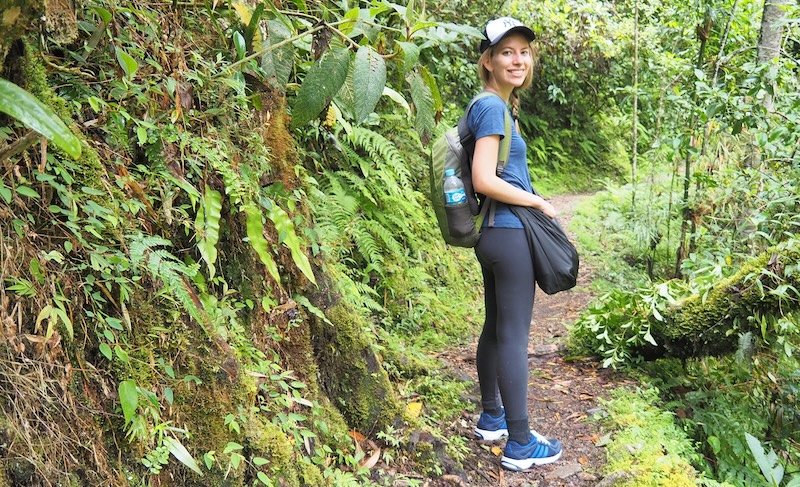
Budget Snapshot (per person per day, ballpark)
- Shoestring: $35–$60 (hostels, menu del día lunches, buses).
- Mid-range: $70–$130 (guesthouses/hotels, some tours, occasional flights).
- Comfort/plus: $150–$300+ (nicer hotels, premium trains, Amazon cruises).
Big-ticket items to plan for: Machu Picchu entry + transport, Inca Trail/alternative trek, Amazon lodge/cruise, flights.
Safety & Common Scams (simple, effective habits)
- Keep phones zipped away street-side; use cross-body bags.
- Withdraw cash from indoor ATMs (malls/banks) and shield the keypad.
- In markets/transport hubs, wear your daypack on your chest.
- Only book tours with licensed agencies or direct recommendations.
- In taxis, confirm fare before starting or insist on the meter (where used).
- Night buses: choose reputable companies; keep valuables on you.
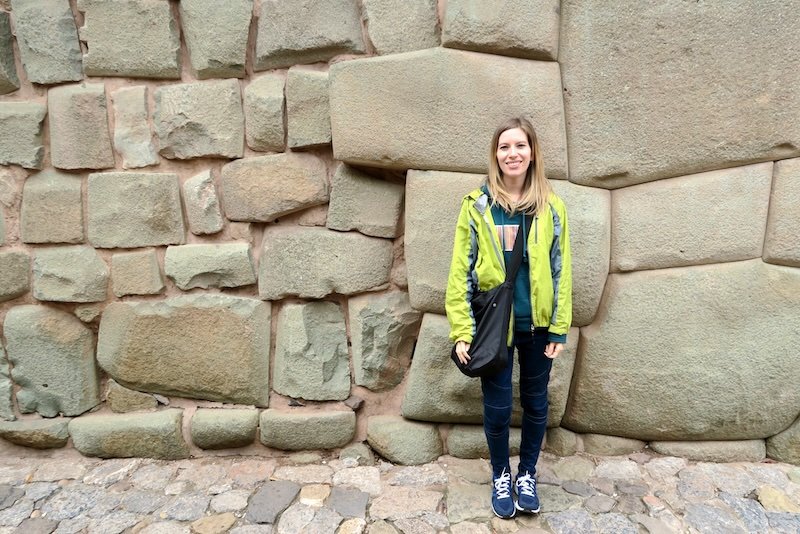
Packing for Three Climates in Peru
Coast basics
- Light layers, breathable tops/shorts, sun hat, sunglasses, reef-safe SPF, comfy walking shoes, light sweater for Lima evenings.
Andes basics
- Fleece/insulated layer, packable rain shell, quick-dry pants, warm hat/neck warmer (nights at Titicaca are cold), sturdy sneakers/hiking shoes, gloves (for Jun–Aug), lip balm with SPF.
Amazon basics
- Long-sleeve, light-colored shirts; thin pants; DEET or picaridin repellent; quick-dry socks; sandals; small dry bag; headlamp; personal meds. Many lodges provide rubber boots & ponchos.
Shared essentials
- Reusable water bottle, universal adapter, power bank, meds for altitude/ motion/ stomach, copies of documents (digital + paper), small first-aid kit.
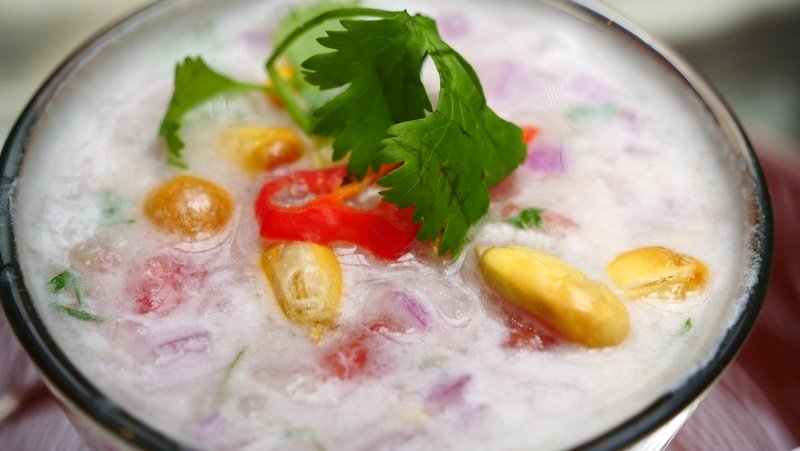
Food Roadmap (what to try where)
- Lima/Coast: Ceviche, tiradito, causas, anticuchos, picarones, chicha morada.
- Cusco/Andes: Alpaca skewers, chairo soup, lomo saltado, choclo con queso, quinoa everything, coca tea.
- Puno/Titicaca: Trucha (trout) grilled or fried, chuño-based soups.
- Iquitos/Amazon: Juane, tacacho con cecina, paiche, camu camu juices, assorted tropical fruits.
Menu del día (set lunch) is your budget hero—soup + main + drink at local joints.
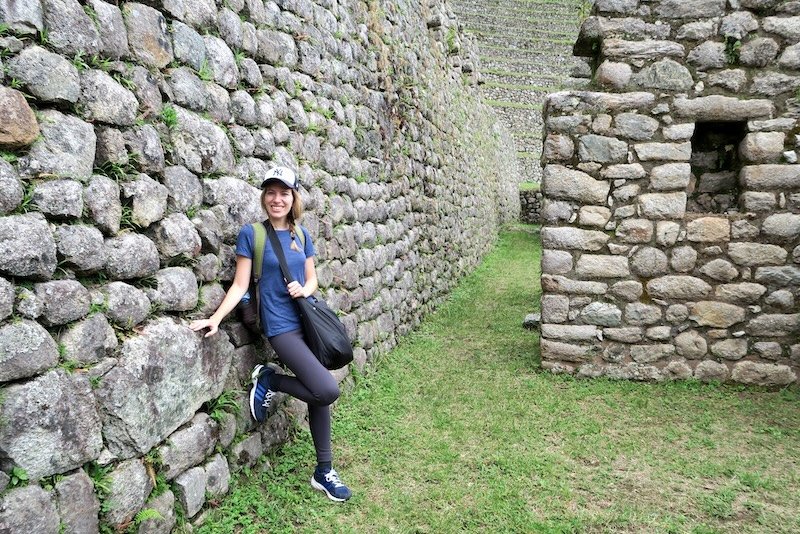
Should You Trek, Train, or Mix? (Machu Picchu options at a glance)
| Option | Who it’s for | Time | Highlights | Considerations |
|---|---|---|---|---|
| 2-Day Inca Trail | Want the Sun Gate arrival without 4 days | 2 days / 1 night | Hike a classic section + guided MP | Permits sell out; stairs + altitude |
| 4-Day Inca Trail | Icon lovers who want the full route | 4 days / 3 nights | Ruins en route, varied ecosystems | Physical challenge; book months ahead |
| Train + Day Tour | Comfort & time-savvy travellers | 1 long day or 1 night | Scenic train + guided MP | Less time on site unless you overnight |
| Alternative treks (Salkantay, Lares, Inca Jungle) | Scenery lovers/ fewer crowds | 3–5 days | Mountains, villages, or biking/zipline | Varying difficulty; ends via train/bus |
Lake Titicaca: Day Trip vs. Homestay
| Style | Best for | What you do | Why pick it |
|---|---|---|---|
| Day trip (Uros) | Tight schedules | Visit floating islands, short reed-boat ride | Quick taste of Uros life |
| Overnight (Uros + Amantaní/Taquile) | Cultural travelers | Stay with a family, hike to sacred peaks, dance night | Deeper connection, sunset/sunrise magic |
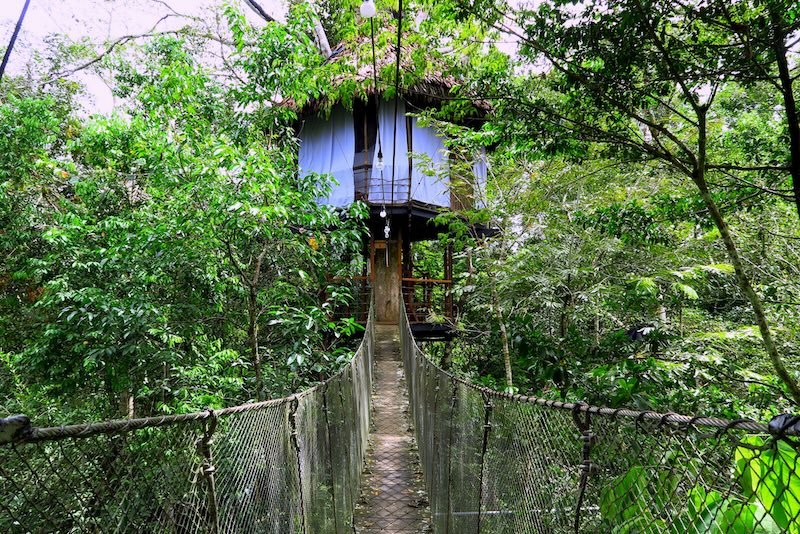
Amazon: Lodge vs. Cruise vs. Treehouse
| Option | Vibe | Activities | Good to know |
|---|---|---|---|
| Jungle Lodge | Rustic-to-comfortable | Day/night walks, boat safaris, village visits | Basecamp feel; choose by wildlife focus |
| River Cruise | Comfortable/ premium | Multiple daily skiff outings, canopy walks, beaches (seasonal) | Great guiding & AC; higher cost |
| Treehouse Stay | Adventure/unique | Similar to lodges, but you sleep in the canopy | Romantic + rustic; mind heights & bugs |
Coast Trio: Paracas vs. Huacachina vs. Ica
| Base | Why go | Headliners | Pair with |
|---|---|---|---|
| Paracas | Wildlife + sea breeze | Islas Ballestas boat, Paracas Reserve | Huacachina dunes the next day |
| Huacachina | Adrenaline + sunsets | Dune buggies, sandboarding, dune hikes | Ica vineyards lunch/date night |
| Ica (outskirts) | Wine & relax | Vineyard stays, tastings, pools | Easy day trip to Huacachina |
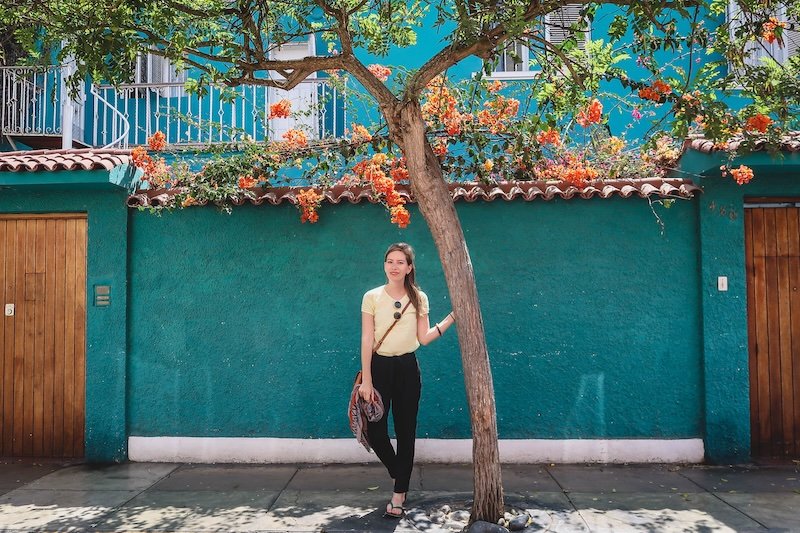
Where to Stay in Lima (quick neighborhood picker)
| Area | Personality | Pros | Keep in mind |
|---|---|---|---|
| Miraflores | Polished coastal hub | Parks, clifftop walks, restaurants | Touristy (which can be handy) |
| Barranco | Boho & artsy | Murals, cafes, nightlife, museums | Evenings can be lively/noisy |
| Centro | Historic core | Plazas, colonial architecture, museums | Busy by day, quieter at night; choose lodging carefully |
Add-On Ideas If You Have Extra Days
- Arequipa + Colca Canyon: White-stone city & condors.
- Huaraz & Cordillera Blanca: High-Andes trekking heaven (¾ acclimatization needed).
- Nazca Lines: Flyover from Nazca or Pisco; or view tower (budget).
- Northern Peru (Trujillo/Chiclayo): Moche/Chimu archaeology and surf towns.
- Chachapoyas (Kuelap & Gocta): Cloud-forest fortress and giant waterfall.
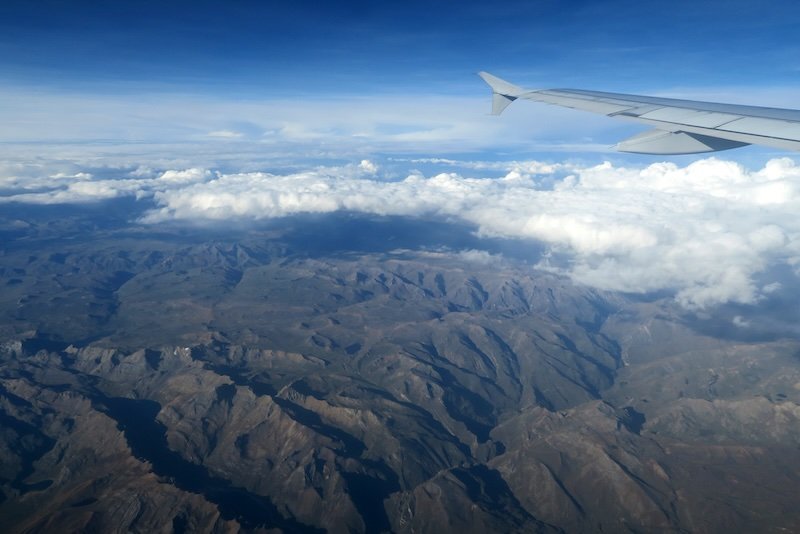
“Save Me Time” Checklists
Pre-Departure
- Passport valid 6+ months past return date
- Domestic flights booked (Lima–Cusco, jungle legs)
- Machu Picchu/ trek permits & trains reserved
- Travel insurance
- Vaccines/meds chat (altitude, jungle)
- Offline maps & key confirmations downloaded
- Copies of passport/insurance/itineraries backed up to cloud
On Arrival in Lima
- Local SIM/eSIM activated or confirm roaming
- Small cash for taxis/tips; learn to identify real soles
- First two nights booked (Lima + Cusco)
- Acclimatization day in Cusco kept light
Inca Trail Day-pack (customize per trek)
- Passport (checked at trail gates)
- Water (hydration bladder + bottle), electrolytes
- Layers: sun shirt, fleece, rain shell
- Hat, buff, sunscreen, sunglasses
- Snacks (nuts, chocolate, coca candies)
- Personal meds/blister kit/TP & zip-bags
- Headlamp & power bank
Amazon Day-bag
- Long-sleeve light shirt & pants
- Repellent, sunscreen, hat
- Dry bag for phone/camera
- Headlamp, binoculars (optional but fun)
- Refillable bottle (many lodges filter water)
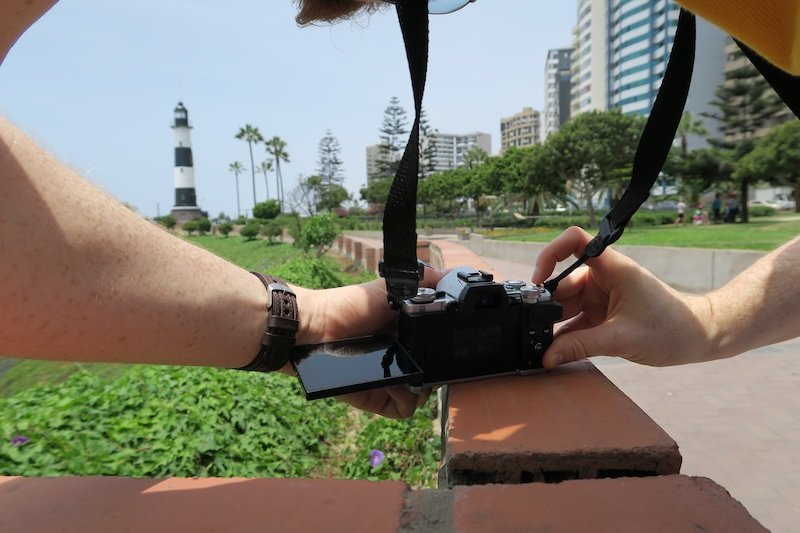
FAQ: Peru (12 helpful Q&As)
- Do I need to book Machu Picchu far in advance?
Yes. Entry tickets (especially for Huayna Picchu/Machu Picchu Mountain) and Inca Trail permits sell out weeks to months ahead in high season. Trains and popular time slots go fast, too. - Is the 2-day Inca Trail enough if I’m short on time?
Absolutely. You still enter via the Sun Gate, hike a classic section, and get a guided visit the next morning. Great middle ground. - Can I do Machu Picchu as a day trip from Cusco?
Yes, but it’s a long day (early train, late return). If time allows, overnight in Aguas Calientes for a more relaxed visit and better photo light. - Will I get altitude sickness in Cusco/Lake Titicaca?
Many people feel something (headache/fatigue). Go slow the first day, hydrate, avoid heavy meals/alcohol, and consider acetazolamide after consulting your doctor. Sacred Valley first can help. - Is Lima worth time or should I fly straight to Cusco?
Lima is a world-class food city with cool neighborhoods and coastal walks. If you can spare 1–2 days, it’s rewarding; if you’re tight, head straight to the Andes and circle back later. - What’s the dress code for churches and upscale restaurants?
Smart-casual works. For churches, cover shoulders/knees out of respect. In Lima’s fine-dining spots, jeans and a nice top are fine; no need for formalwear. - Is the Amazon safe from mosquitoes if I go in “dry season”?
There are always mosquitoes. Dry season usually has fewer, but you’ll still want long layers and repellent. Lodges commonly provide nets; some cruises have screened/AC cabins. - Can vegetarians/vegans eat well in Peru?
Yes—especially in Cusco, Lima, and Iquitos. Traditional dishes lean meaty, but menus vegetarianos, quinotto, tacu tacu, hearty soups, and Amazon produce make it very doable. - How do I pay—cash or card?
Carry both. Cards are widely accepted in cities (sometimes with a small fee); cash is king for markets, small towns, tips, and some tours. Use indoor ATMs and keep small bills for change. - Is tap water drinkable?
Generally no. Drink bottled or filtered. Many hotels filter water; bringing a purifier bottle is eco-friendly and pays off fast. - Is it safe to take night buses?
Choose reputable companies, keep valuables in a small bag on you, and consider daytime for mountain routes. I often mix night buses on the coast with day buses in the Andes. - What’s a respectful gift to bring for Lake Titicaca homestays?
Ask your guide for current needs. Thoughtful picks include notebooks, pencils, headlamps with extra batteries, cooking staples, or a small toy/art supplies for kids—avoid candy and bulky items.
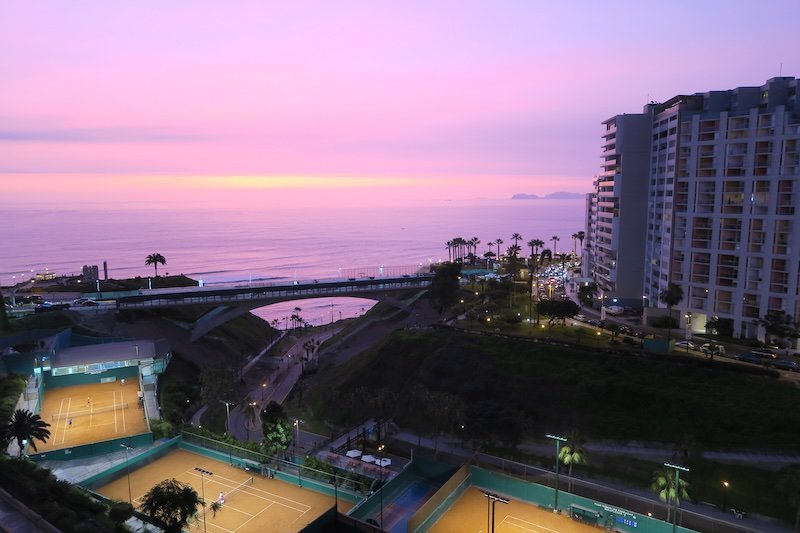
What are your favourite places in Peru?
Any other destinations you’d add to this Peru travel itinerary?

Ica looks so beautiful!
I loved the winery in Ica! It’s such an easy weekend getaway and it’s quite the change from the city.
Seems like you saw a whole lot of Peru in just a month. You really had some incredible experiences; it’s no wonder a lot of travellers always want to get back to Peru again. I hope I’ll get to visit Peru too!
Wow! This is a packed itinerary… Peru is definitely on my list. 🙂
Looks like you had good weather for Machu Picchu — that would be my biggest concern!
I’ve always wanted to go to Peru. Do you think there’s enough there to keep children happy?
how much would u say 2 people will spend in peru if they wanna go for a month. it looks amazing, i would love to go to lima, cuzco, the amazon and see the north of peru i have heard the beaches are beautiful. do u have any idea?
How much money did you spend?
What was the estimated cost for this 1 month trip?
Hi Callie,
It’s hard to give you an exact figure because this will all depend on your personal travel style. Will you be doing hotels or hostels, dining in restaurants or cooking for yourself, taking guided tours or exploring places on foot, etc. I would start off by looking at accommodations in your price range, and then you can decide what tours you’re most interested in and research the costs.
Best,
Audrey
We are hoping to travel Peru for a month next year for our honeymoon as this has been massively useful to us, thank you. I’ve done a bit of travelling myself and i always think its best to get opinions and recommendations from others.
Such a great article Audrey, I literally feel how much you love this place and amazing, that you’ve been there 3 times already! Must be special 🙂 Thanks for sharing all those tips with us, appreciate that!
Thanks for the great info about the different places, helped me a lot to plan my trip. I really loved the alternative tour to the rainbow mountains in Cusco, that I did on my last day in the city of the Incas haha. It was a lot better than the normal tour that almost everyone does because we left Cusco later (at 5:00am) so I could sleep a little longer, we only hiked for 45 minutes (instead of 3 hours) and we saw various rainbow mountains (not just 1)…and we also hiked through the red valley!! Just amazing 🙂 Did the tour with exploorperu, a local Peruvian travel company and they were great. I found out they have a article about the rainbow mountains, I’ll just leave it here for anyone interested (and hope you guys can visit it the next time you’re in Cusco) https://exploorperu.com/blogs/exploor-peru-travel-blog/discover-the-best-route-to-the-famous-rainbow-mountains-of-peru
How did you guys travel around? Did you rent a car or take the bus? I’ll be going for 3 weeks solo and am curious whether its cheaper to rent a car.
Hi Kiah, we did a combination of flights and overnight buses since the distances between these destinations are quite far. You could technically drive from Lima to Ica and Huacachina, but it’s so much easier to take the bus, especially considering what traffic in and around Lima is like.